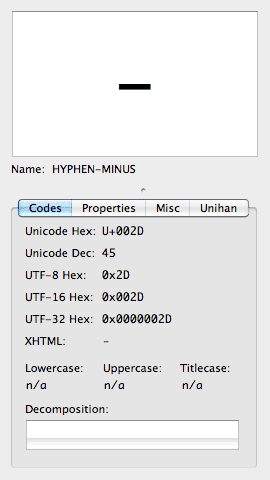I have a theory, one that I’m sure has been formulated by someone else much earlier than me, that all power users eventually get left behind. They get stuck in a highly-optimized box canyon of their own making, one that is perfectly tuned to their way of working and interacting with data and is of interest to precisely nobody else in the world.
Let me use myself as an example. I’m currently running OS X Snow Leopard, 10.6.8, with no intention of upgrading. This is because after Snow Leopard, there is no more Rosetta. That means that my preferred personal mail client, Eudora, will not work. Neither will Word 2004. Both are, in effect, upgrade deal-breakers for me.
But why would I hang on to such relics?
Well, Eudora has been my mail client for quite literally two decades, and thus it has two decades of archived mail that I can search very quickly and easily. I have tried out migrations to other clients; they crash trying to suck in 3GB worth of mail text in Eudora’s special format. I could simply declare a break and move on to a new client with no stored mail, but as soon as I upgrade my OS, even the archives will be inaccessible. This is a major barrier. There are possible solutions, but trying them is incredibly time-intensive with no actual guarantee of success.
As for Word 2004, I have it customized so that ⇧⌘S shifts keyboard focus to the Styles combo box. There I can type the name of the style I want and hit return. This is really important when I’m writing a book whose files eventually have to be passed off to a publisher’s production staff, whose toolchains depend on proper use of styles. O’Reilly in particular went to a lot of effort, back in the day, to create style who had vi-style shortcut names, so I can highlight a few words and type ⇧⌘S fc [return] to set the highlighted text in the “literal” style (used for property names and the like). Versions of Word after 2004 do not possess this feature. I own Word 2011, and often use it to view documents sent to me by others, but I can’t use it as an efficient book-authoring tool because it amputated a feature I use a lot.
So the objection isn’t a simple “I like what I know, dadgumit!”, though of course I do like what I know (we all do). The real problem is “I have built my workflow around these things, and breaking them is unacceptable”.
I hear similar complaints from my designer friends. They’ve gotten so expert at using a particular piece of software that they bemoan even the hint that it will get a significant ‘upgrade’ — which often sounds like “break everything I do while likely adding a metric ton of crap I don’t need” to the power user — or even be discontinued. Although for the power user, discontinuing is often preferable; at least when software is discontinued, it works exactly as you expect for as long as you can keep it running.
The web doesn’t inherently fix this problem, either. When Twitter finally retired the API access points that Twitterrific 3 depended upon, my desktop Twitter client irretrievably broke. Why not upgrade to the latest Twitterrific? Because version 3 allowed me to display my timeline with all tweets collapsed, except for the currently-active tweet. It was an incredibly compact, high-density, useful interface. Version 4 does not permit it. no other Twitter client I’ve tried permits it. In fact, every other Twitter client I’ve tried has come off as cartoonishly clumsy and sprawlingly obtrusive when compared to the sleekness of Twitterrific 3 — including, as I say, the newer version of the very same Twitter client.
Granted, that’s more of a UI preference than a functionality problem, but UI preferences are often what drive us to use things, or not use them. I’m much now less present on Twitter than I was before the break, and when I do go on Twitter, it’s either via the official Twitter client on my iPhone or via twitter.com itself on the desktop.
Getting back to my increasingly-aging OS version, it helps that, to echo one my long-time personal heroes Tim Bray, I have no particular interest in what’s come after Snow Leopard. Dragging window edges might be nice, but I’ve lived without it for a very long time and rarely ever missed it. (Not never, but rarely.)
Yes, the newer OS X versions have a whole bunch of hip new cloud features, but in my case that’s actually a bug, not a feature. I instinctively distrust cloud-based storage for a variety of reasons. The security concerns are pretty significant for me, and for that matter having everything stored remotely is a good idea only if I have 100% reliable network access everywhere I go. Well, I don’t (and neither do you).
But of course the rest of the world is moving in a different direction, leaving people like me behind. That doesn’t mean that the rest of the world has gone mad, or is wrong to move in the direction it does. This isn’t a querulous demand that everything be frozen in the spot I like because if it was good enough ten years ago, it’s good enough now. That’s not how the world works. What I’m doing here, if I’m doing anything worthwhile at all, is documenting the point at which I came to the end of my box canyon, pulled out a guitar, and strummed a quiet ballad to the memory of my own forward progress.
As I say, I think all this happens to every power user at some point or another. We become enmeshed in a web of interlocking dependencies, and sooner or later lock ourselves into a particular place. The odds of it happening increase with age, but that’s less a function of biological age than it is elapsed time. The younger you start, the younger you’re likely to reach this point.
I will have to exit my canyon eventually, of course — but when, how, and why all remain very open questions, and I do not look forward to the turbulent transition periods that are likely to follow.

